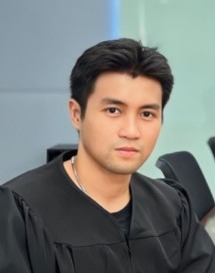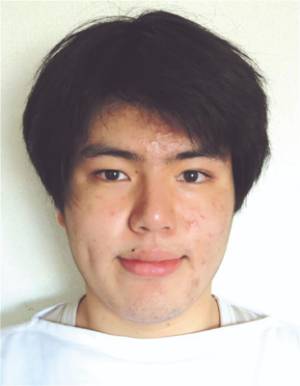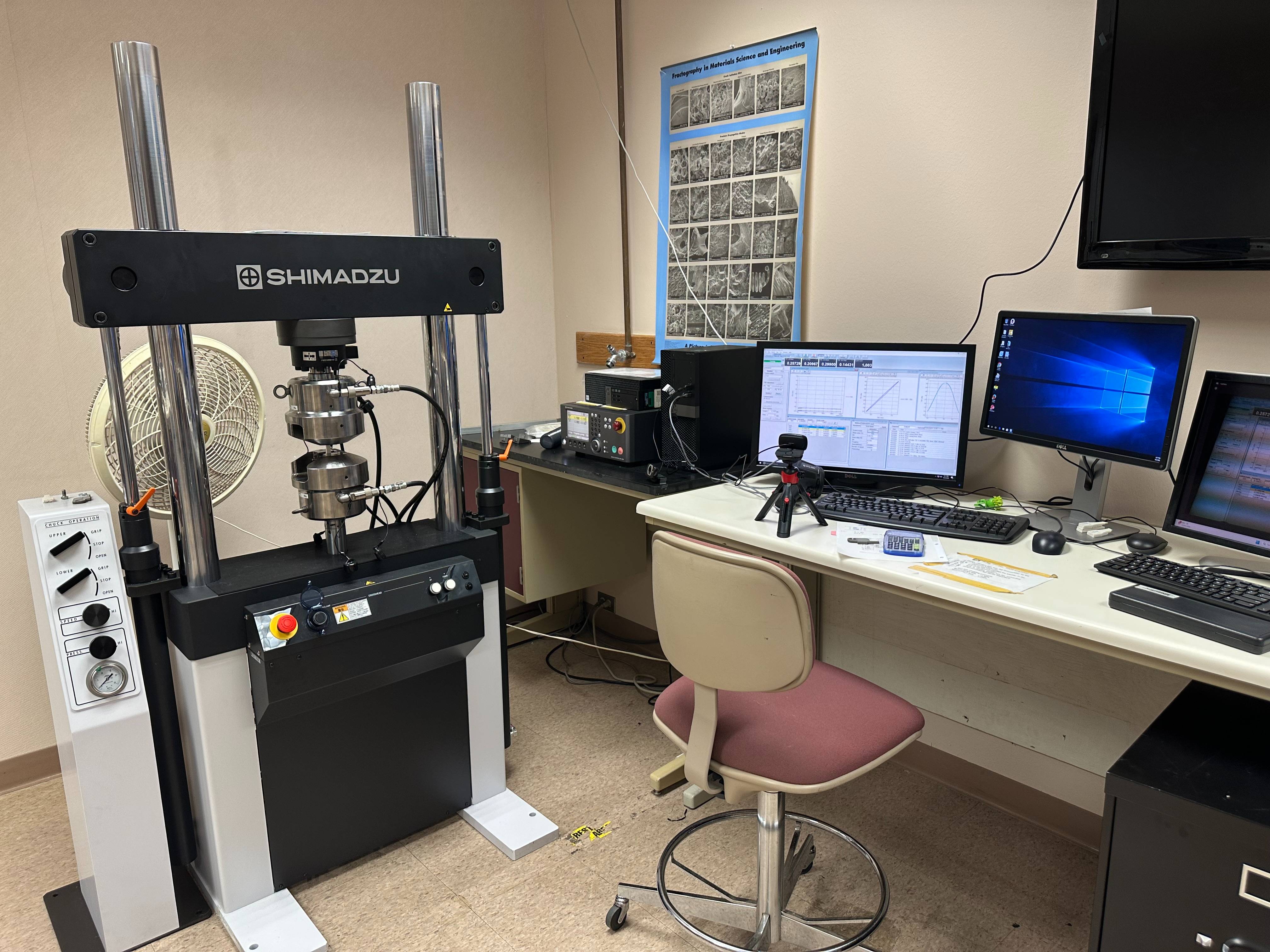"We Break To Build Better"
|
 |
|
|
Welcome to the Fatigue and Fracture Research Lab
|
|
|
• Metal Fatigue
• Fracture Mechanics
• Additive Manufacturing
• Multiaxial Fatigue
• Failure Analysis
• Materials Mechanical Behavior
|
• Fatigue of Polymers
• Biomedical Implant Design
• Mechanical Behavior of Bone
• Composite Materials
• Damage Mechanics
• Mechanical Design
• Experimental Mechanics
|
|
Lab Director: Assistant Professor of Mechanical Engineering |
|
|
Brayden May: Brayden May is an undergraduate researcher, majoring in Mechanical Engineering. His research focuses on the fatigue behavior of 3D-printed thermoplastics, contributing to advancements in additive manufacturing techniques and material durability testing. |
 |
|
|
|
|
Former Students: Minh Tran (Currently Development Engineer at First Solar) Minh Tran is a Mechanical Engineering graduate student doing research on fatigue behavior of porous titanium and thermoplastic cellular structures. Minh's research aims to enhance the performance and durability of materials used in advanced engineering applications. In addition to his academic work, Minh gained valuable industry experience during a summer internship at AESC US headquarters in Smyrna, Tennessee. As an electric vehicle (EV) and energy storage systems (ESS) battery cell process engineer intern, Minh developed an automated packaging machine capable of processing 15 battery cells per minute, improving efficiency and safety. |
 |
|
Genya Ohama: A Bachelor's student majoring in Mechanical Engineering at Arkansas Tech University, conducted fatigue testing experiments on 17-4 Stainless Steel material produced by binder jetting. |
 |
|
MONOTONIC TESION TESTING FATIGUE TESTING FRACTURE TOUGHNESS TESTING FATIGUIE CRACK GROWTH TESTING HARDNESS TEST FRACTOGRAPHY FRACTURE TOUGHNESS TESTING |
|
1. Servopulser Servo Dynamic Systems EHF-E SERVOPULSER, 50KN, ± 50 mm from Shimadzu Features include:
|
 |
| 2. ROTATING BENDING 3. OPTICAL MICROSCOPE 4. HARDNESS TESTER 5. INFRARED CAMERA |
|
Conferences:
Journal Publications:
|
 |
|
Mohammad Amjadi, Ph.D. Assistant Professor of Mechanical Engineering |
 |